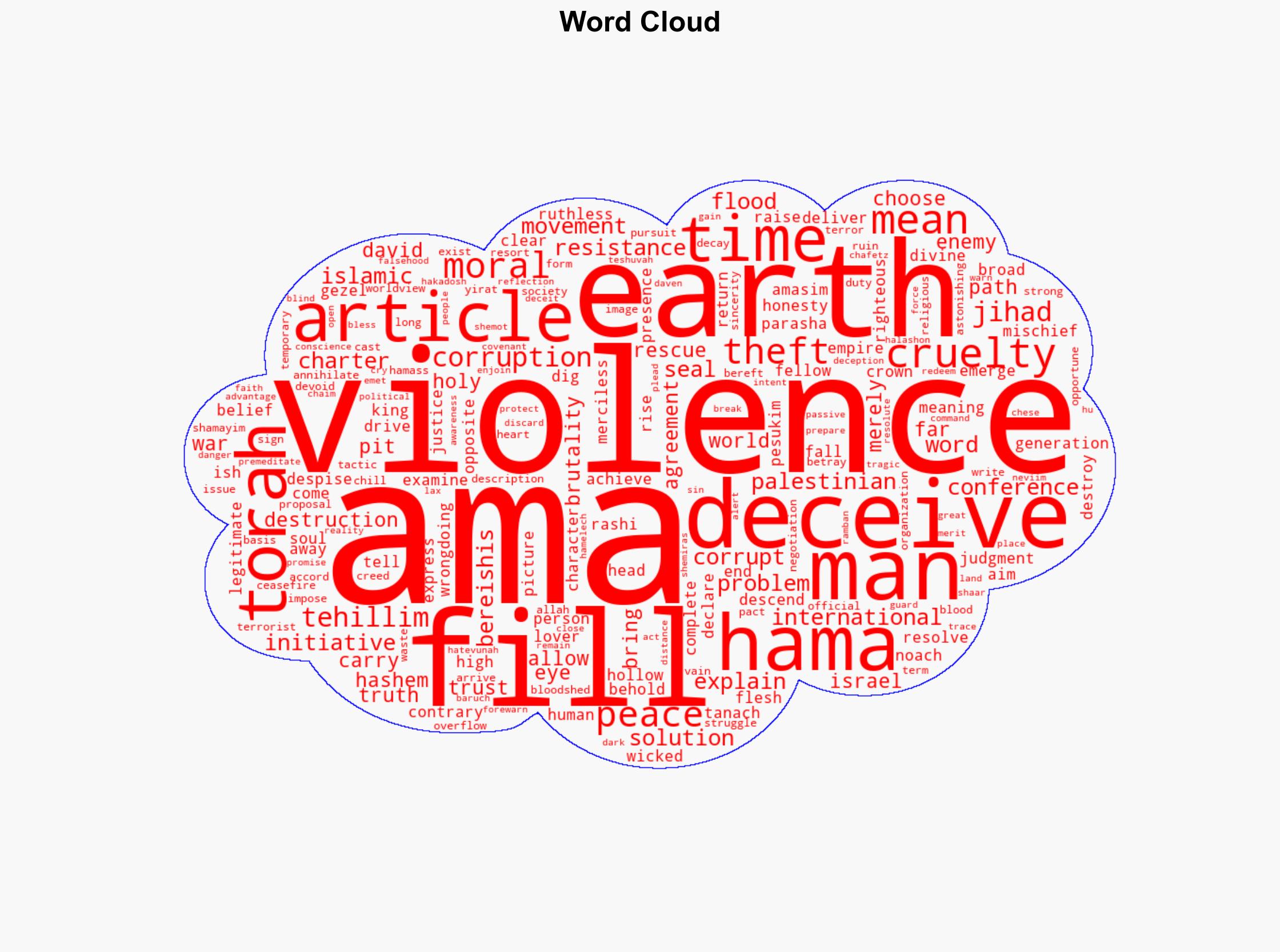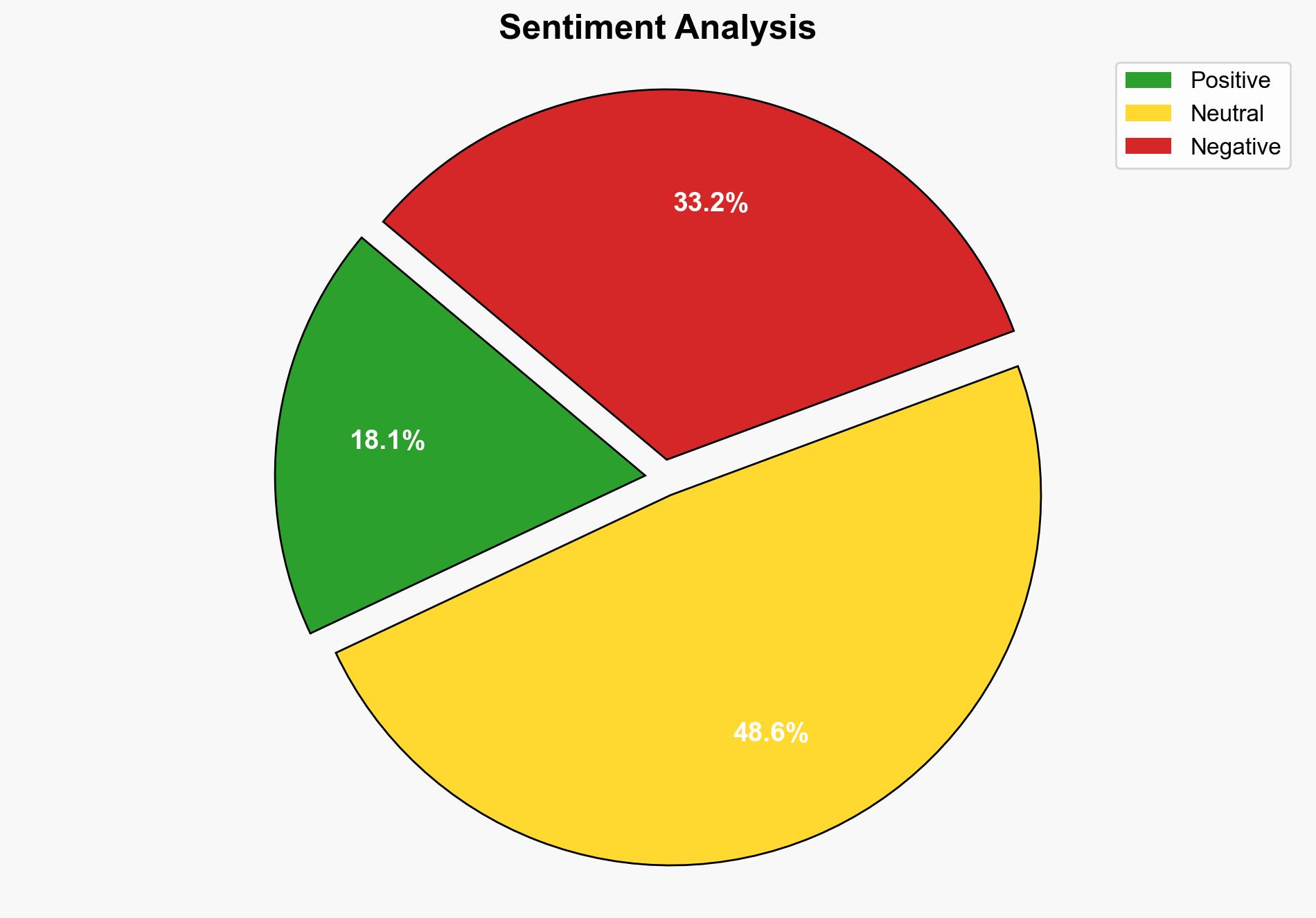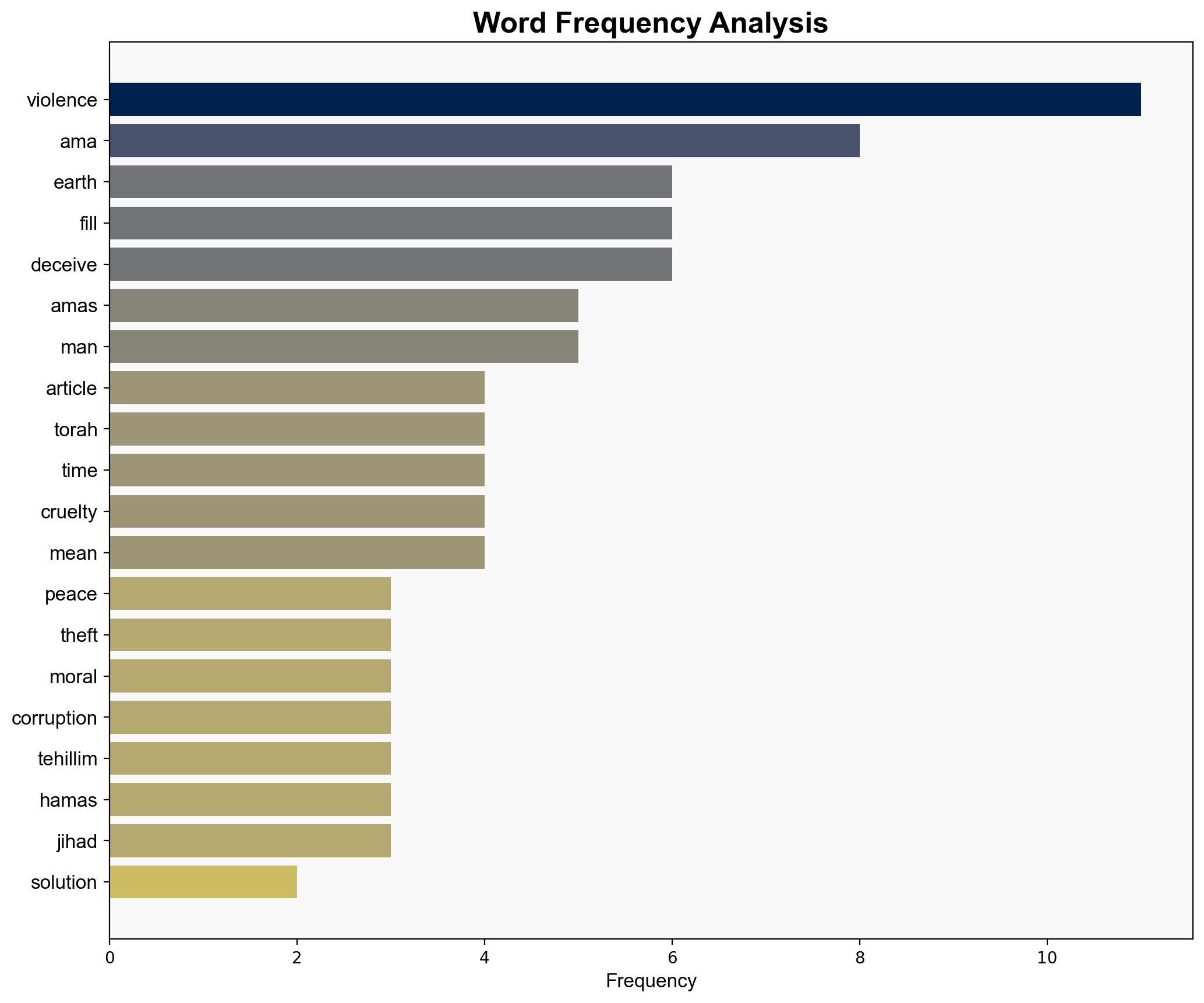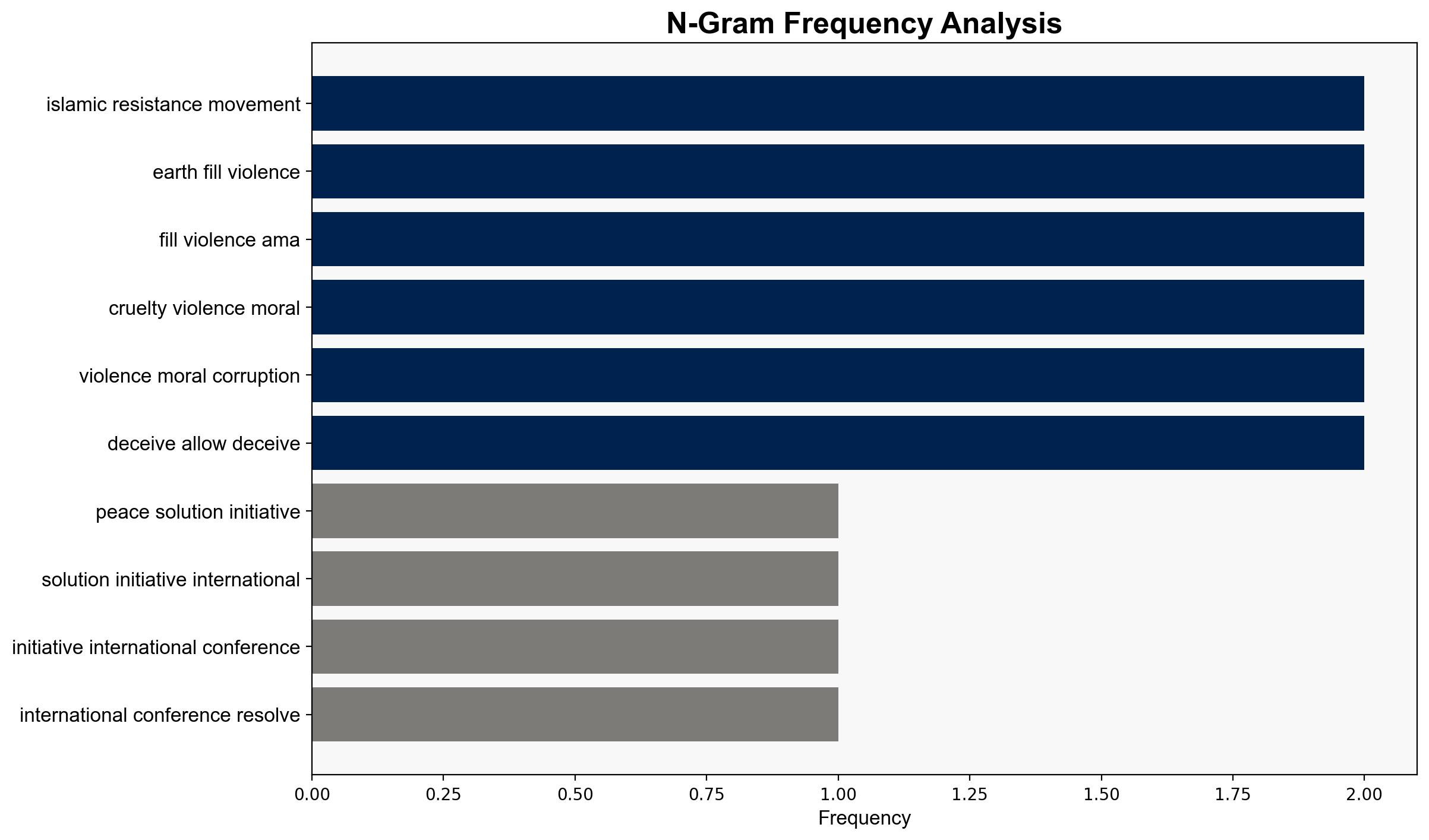Hamas in the Torah and in the Hamas Charter – Israelnationalnews.com
Published on: 2025-10-24
Intelligence Report: Hamas in the Torah and in the Hamas Charter – Israelnationalnews.com
1. BLUF (Bottom Line Up Front)
The analysis suggests that the portrayal of Hamas in both religious and political contexts serves to highlight its ideological rigidity and potential for violence. The hypothesis that Hamas uses religious justification for its actions is better supported. Confidence level: Moderate. Recommended action: Enhance counter-terrorism measures and diplomatic efforts to address ideological narratives.
2. Competing Hypotheses
1. **H1: Hamas employs religious narratives to justify its political and violent actions.** This hypothesis suggests that the use of religious texts and interpretations in the Hamas Charter is a strategic choice to legitimize its actions and rally support.
2. **H2: The religious references in the Hamas Charter are symbolic and not indicative of actual operational strategy.** This hypothesis posits that the religious language is primarily rhetorical and does not directly influence Hamas’s tactical decisions.
Using ACH 2.0, H1 is better supported due to the explicit references in the charter that align with historical and current actions of Hamas, indicating a pattern of religiously motivated rhetoric and behavior.
3. Key Assumptions and Red Flags
– **Assumptions**: H1 assumes that religious narratives are integral to Hamas’s identity and operational strategy. H2 assumes that the religious language is primarily for external perception.
– **Red Flags**: The potential for cognitive bias exists in interpreting religious texts as direct motivations for actions. The lack of direct evidence linking religious rhetoric to specific operational decisions is a critical gap.
– **Deception Indicators**: The use of religious language could be a strategic deception to mask political motives.
4. Implications and Strategic Risks
– **Patterns**: The intertwining of religious and political narratives could lead to increased radicalization and recruitment.
– **Cascading Threats**: Escalation of violence justified by religious rhetoric could destabilize regional security.
– **Geopolitical Risks**: Misinterpretation of religious motives by international actors could lead to ineffective policy responses.
5. Recommendations and Outlook
- Enhance intelligence operations to monitor religious narratives and their influence on Hamas’s actions.
- Engage in diplomatic efforts to counteract extremist narratives and promote moderate interpretations.
- Scenario Projections:
- Best: Successful diplomatic engagement reduces violence.
- Worst: Increased radicalization leads to widespread conflict.
- Most Likely: Continued tension with sporadic violence.
6. Key Individuals and Entities
– Hamas leadership (unnamed for strategic focus)
– Religious scholars interpreting texts
7. Thematic Tags
national security threats, counter-terrorism, ideological narratives, regional focus




